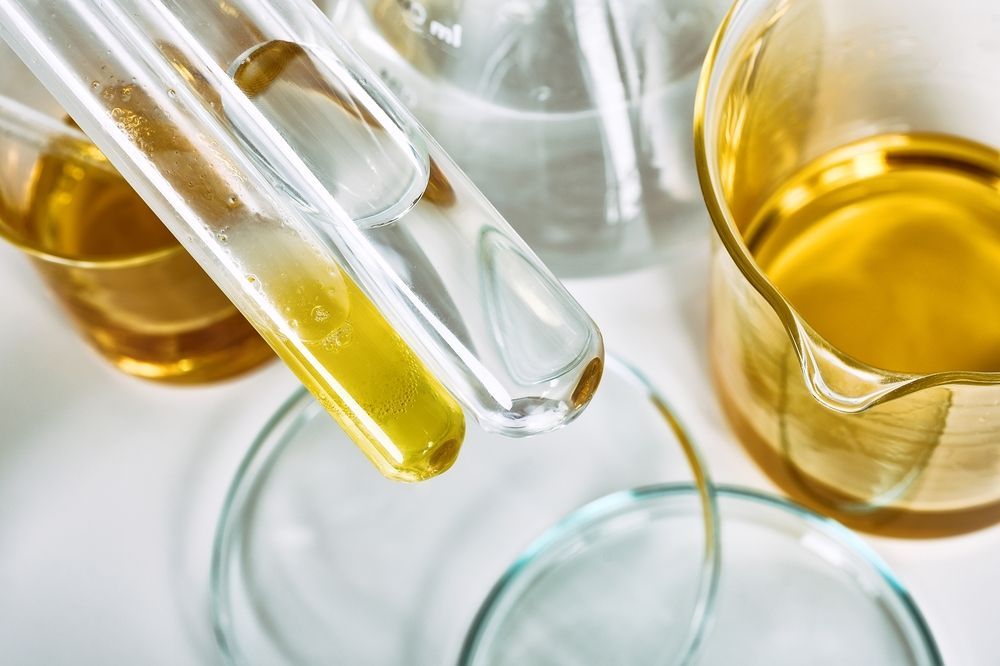How to Remove Polyurethane with Acetone & Other Solutions
October 22, 2024
Written by: Vertec BioSolvents

Polyurethane is a strong and durable sealant that can last for decades. That's great news if you want to protect or preserve a surface, but it becomes a problem if you need to remove it. Polyurethane removal can be frustrating and tedious, particularly if you're using inefficient or unsafe solutions. Learn about how to remove polyurethane using a variety of methods, including acetone and bio-based solvents.
What You Need to Know Before Removing Polyurethane
Taking cured polyurethane off a surface is a common practice for painters, construction teams, and home improvement aficionados. If you've never tried to remove this notoriously difficult substance, you may be surprised by some of the obstacles you encounter.
Why You May Need to Remove Polyurethane
Polyurethane removal often occurs when someone wants to clean, refinish, or improve the appearance of an item. Over time, polyurethane on furniture and other surfaces, such as hardwood floors and decks, becomes damaged. You might need to remove it to eliminate visible scratches, dings, and gouges and apply a fresh coat.
Wood treated with polyurethane also doesn't absorb paint or stain as effectively as untreated wood. As a result, people often remove polyurethane when they want to change the color of a wooden surface.
What Can Remove Polyurethane Effectively?
There are a handful of chemicals that can remove polyurethane. They include:
- Isopropyl alcohol
- Acetone
- Xylene
- Paint strippers
- Bio-based solvents
However, these chemicals have significant differences in terms of strength and toxicity.
Why Removing Polyurethane Can Be Challenging
Polyurethane is difficult to remove by design. It protects wood, plastic, and other materials from damage and slows natural deterioration. When you attempt to take polyurethane off a surface, you'll likely discover that it creates a sticky residue. Depending on the size of the area and the amount of buildup, that could mean hours or days of hard work.
Certain polyurethane removal methods can also be problematic. For example, scraping, sanding, and applying chemicals can damage the surface underneath the polyurethane. In addition, the substances used to remove polyurethane—and the polyurethane itself—are often toxic. This makes the process potentially dangerous for people and animals.
Can Acetone Effectively Remove Polyurethane?
Acetone is a strong solvent, so it can remove some polyurethane if you use it correctly. Before you use it, it's important to understand the process and its potential downsides.
How It Works
Acetone is a solvent that can turn dried polyurethane into a liquid. These are the typical steps when using acetone for polyurethane removal:

- If working indoors, prepare the space by opening windows to allow for ventilation, protecting your health and reducing the risk of fires.
- Put on safety gear, including gloves.
- Pour the acetone onto the surface or apply it with a brush.
- Wait 10 to 15 minutes for the acetone to soften the polyurethane.
- If necessary, scrape the polyurethane away with a putty knife or scraper.
- Wipe the surface clean with a dry cloth.
Some polyurethane is resistant to acetone. If you follow these steps and are unable to remove it, you may need to try a different approach.
Is Acetone the Best Solution?
While acetone can generally remove polyurethane, it comes with several disadvantages. It's highly flammable, so even a small flame or spark can set off a fire or explosion when enough vapors are present. It also has a strong odor that makes it unpleasant to use.
Acetone exposure can negatively impact human health, with symptoms such as:
- Headaches
- Confusion
- Nausea
- Racing pulse
- Unconsciousness
- Nose, throat, lung, or eye irritation
- Dry, cracked skin
It can also have negative effects on the environment, harming aquatic life if it spills or seeps into water sources or groundwater.
Other Common Methods for Removing Polyurethane
Acetone is far from the only option available if you want to remove polyurethane. Many people use sanding strips, sanders, or metal scrapers to gradually remove the substance. You might also opt to use a planer, which trims the surface to expose the bare wood underneath.
Chemical strippers are another popular option. However, many of the paint strippers that are on the market are extremely harsh and often hazardous.
Exploring Eco-Friendly Solutions to Remove Polyurethane
Many people who want to reduce their environmental impact are looking for alternatives to solvents like acetone. Biosolvents are equally effective but safer than other polyurethane removal methods.
The Advantages of Biosolvents
High-quality biosolvents have the same strength as acetone and other solutions—without the health and environmental issues. Made from renewable resources and with no environmentally hazardous ingredients, these solvents are more eco-friendly in every way. They're also non-toxic and have a much more subtle and appealing smell than acetone.
How Biosolvents Work
The process of using biosolvents is very similar to acetone and other traditional solvents. You simply apply it to the surface, wait as it softens the polyurethane, and wipe it away with a cloth. Good biosolvents leave very little or no residue.

Choosing the Right Removal Method for Your Needs
When deciding how to remove polyurethane, look for a solution that balances safety, power, and speed. Health and environmental concerns, such as toxicity levels, are key for many people. Bio-based solvents and physical processes like sanding are environmentally friendly and non-toxic. Acetone and chemical strippers, on the other hand, can hurt people and the planet.
The method you choose also depends on the type and condition of the item. Think about how old it is, whether it's fragile, and if you want to protect any details of the underlying surface.
Another point to consider is how much work you'll have to do. Some methods of polyurethane removal, such as sanding and scraping, are more labor-intensive, whereas solvents are generally easier and less time-consuming.
Why Choose Vertec's Eco-Friendly Solvents for Your Polyurethane Removal?
Vertec offers a line of bio-based solvents that are ideal for polyurethane removal. VertecBio 5516 is an environmentally friendly solvent that's non-hazardous and effective at cleaning polyurethanes and epoxies. VertecBio Citrus also works well on polyurethane, epoxy, resins, paints, coatings, and inks.
Reach out to the Vertec team to learn more about our bio-based solutions for polyurethane removal or request a quote.
Environmentally friendly solvent ideal for cleaning polyurethanes and epoxies. Includes no environmentally hazardous ingredients, with a moderate drying time that leaves behind no residue.
An excellent cleaner for epoxy, polyurethane, and other resins, this bio-based alternative is the perfect replacement for Xylene and Toluene cleaning solvents.




